Lights (LEDs)
WHAT ARE LIGHTS?
Lights can act as a visual cue to alert non-target species of fishing gear. They are a practical, cost effective solution to help reduce bycatch in driftnet and static net fisheries. Simple and robust, LED lights are designed to be attached to fishing nets to increase visibility of the gear to a wide range of non-target species. By illuminating the net, non-target megafauna species are aware of its presence and therefore are less likely to become entangled – the net becomes more selective – subsequently reducing the time fishermen spend repairing their gear after damages caused by unintentional bycatch.
Different patented designs are available – such as the FishTek ‘NetLight’ and the Centro ‘Deep Water Power Light’ – both are as compact and lightweight as possible. The lights are LEDs, run on AA batteries and can provide illumination for 500-800 hours (in the case of Fishtek’s ‘NetLight’). Built with reinforced attachment points, the lights are held securely in place, increasing usability when setting and hauling. Both Fishtek’s light and Centro’s light are additionally designed with automatic immersion control so the light only switches on once the device is underwater. Fishtek’s NetLight is also designed to be more economically feasible for fishers with fewer means.

Source: FishTek Marine

Source: Centro Fishing
CURRENT RESEARCH & USE
Seabirds
A 2019 study on a small-scale Peruvian gillnet fishery reported that illuminated nets reduced bycatch by 71% for small cetaceans and 84% for seabirds when compared with the non-illuminated, control nets. Crucially, lights did not negatively affect the catch rates of target species. Another study on the demersal, set gillnet fishery of Constante, Peru, reported an 85% decline in cormorant bycatch following the deployment of lights.
Several studies focusing on seabirds have found that LED lights can act to attract birds and increase bycatch rates. This was the case with long-tailed ducks in a Baltic Sea gillnet fishery and with northern gannets and northern fulmars in an Icelandic set gillnet fishery. Scientists involved in the Baltic Sea study suggested that the particular foraging strategy of long-tailed ducks could explain the finding. Another study, conducted in the Iceland lumpfish fishery, found that LED lights had no impact on bycatch of common eider, king eider, and long-tailed duck. Together the results emphasise that future development and deployment of net lights as a bycatch reduction device should be species- and location-specific, taking into account the varying behaviours and visual capabilities of vulnerable non-target species, as well as that of target species. The colour of the light-emitting lures used in longline fisheries, and interplay with the lunar cycle, has also been found to affect rates of bycatch across different species and taxa (for example, turtles and sharks may be attracted to light intended to attract tuna).
Turtles and elasmobranchs
A study of Ghana’s artisanal gillnet fishery found that green LED lights resulted in an average of 81% declines in sea turtle capture across three different species (olive ridley, leatherback and green). Green flashing LED lights have also been trialled with trammel nets in a small-scale fishery in Cyprus, resulting in a 42% reduction in green and loggerhead turtle bycatch and a 50% reduction for skates and rays, although the study authors caveat that net depth may have played a greater role in determining bycatch rates. Adding to uncertainty, a study with small-scale fishers in the Adriatic Sea using a mix of gillnets and trammel nets found that green LED lights (non-flashing) did not reduce turtle bycatch and decreased target catch by a third.
For turtles, an alternative to LED lights may be phosphorescent (photoluminescent) PVC panels. When these were tested in a small-scale gillnet fishery in Tunisia, loggerhead turtle bycatch fell by 65% and target catch increased by a quarter; although the researchers cautioned that the potential environmental impacts of the PVC and potential biodegradable alternatives need consideration.
Cetaceans
In the UK, LED lights were initially included in a cetacean bycatch mitigation trial being led by Cefas in Cornwall. However, they were removed as participating skippers found that they affected the buoyancy of nets and did not turn off. The opportunity remains to test the efficacy of lights in reducing cetacean bycatch, provided practical issues with their use can be resolved.
This page was last updated on 03.07.25.
Interested in how this and other measures could mitigate bycatch in your fishery? Get in touch with us to collaborate or take part in a study.

